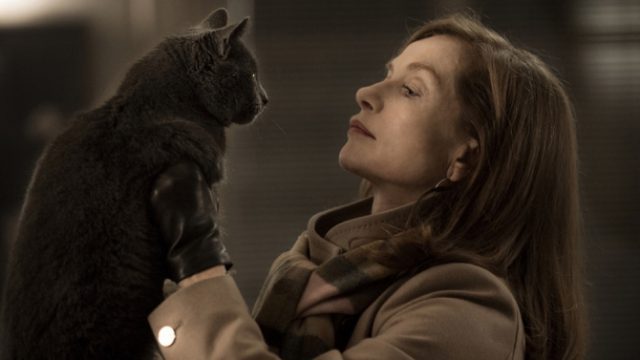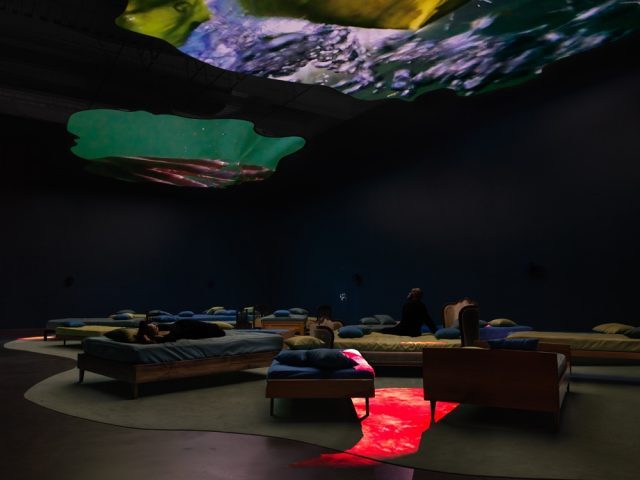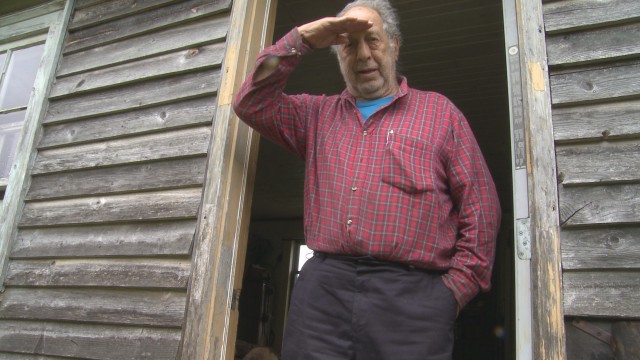
Robert Frank takes a unique look at his life and career in documentary made by his longtime editor
DON’T BLINK — ROBERT FRANK (Laura Israel, 2015)
MoMA Film, Museum of Modern Art
11 West 53rd St. between Fifth & Sixth Aves.
Saturday, January 7, $15, 7:30
Series runs through January 12
Tickets: $12, may be applied to museum admission within thirty days
212-708-9400
www.dontblinkrobertfrank.com
www.moma.org
 “I hate these fucking interviews,” innovative, influential, ornery, and iconoclastic photographer and filmmaker Robert Frank says while preparing to be interviewed in 1984; the scene is shown in Laura Israel’s new documentary, Don’t Blink — Robert Frank. “I’d like to walk out of the fucking frame,” he adds, then does just that. But in Don’t Blink, Frank finds himself walking once more into the frame as Israel, his longtime film editor, attempts to get him to open up about his life and career. Born in Zurich in 1924, Frank immigrated to the United States in 1947, became a fashion photographer, and had his artistic breakthrough in 1958 with the publication of the controversial photo book The Americans, which captured people unawares from all over the country, using no captions, just image, to get his point across. (In 2009, “The Americans”) was installed at the Metropolitan Museum of Art, in addition to a gallery show of related photographs at Pace/McGill.) In the film, Frank does talk about his past and present, discussing his time with such Beats as Jack Kerouac, Allen Ginsberg, William S. Burroughs, and Peter Orlovsky, which he displayed in the 1959 film Pull My Daisy, narrated by an improvising Kerouac and codirected by Alfred Leslie; touching on the tragic early deaths of his son and daughter; sharing details about his parents, including his father, whose hobby was photography; hanging out with his wife, fellow artist June Leaf; and delving into such influences as Walker Evans and his creative process, which is not exactly complex. “Usually the first picture is the best one. Make sure they’re smiling, say cheese,” Frank says with a laugh, then adds, “The main thing is get it over, quick.” Israel takes that advice to heart, trying to get what she can out of Frank before he changes his mind; at first he didn’t want to participate in the film at all, but once he went with it, he also made sure to playfully battle with Israel over who was really in control.
“I hate these fucking interviews,” innovative, influential, ornery, and iconoclastic photographer and filmmaker Robert Frank says while preparing to be interviewed in 1984; the scene is shown in Laura Israel’s new documentary, Don’t Blink — Robert Frank. “I’d like to walk out of the fucking frame,” he adds, then does just that. But in Don’t Blink, Frank finds himself walking once more into the frame as Israel, his longtime film editor, attempts to get him to open up about his life and career. Born in Zurich in 1924, Frank immigrated to the United States in 1947, became a fashion photographer, and had his artistic breakthrough in 1958 with the publication of the controversial photo book The Americans, which captured people unawares from all over the country, using no captions, just image, to get his point across. (In 2009, “The Americans”) was installed at the Metropolitan Museum of Art, in addition to a gallery show of related photographs at Pace/McGill.) In the film, Frank does talk about his past and present, discussing his time with such Beats as Jack Kerouac, Allen Ginsberg, William S. Burroughs, and Peter Orlovsky, which he displayed in the 1959 film Pull My Daisy, narrated by an improvising Kerouac and codirected by Alfred Leslie; touching on the tragic early deaths of his son and daughter; sharing details about his parents, including his father, whose hobby was photography; hanging out with his wife, fellow artist June Leaf; and delving into such influences as Walker Evans and his creative process, which is not exactly complex. “Usually the first picture is the best one. Make sure they’re smiling, say cheese,” Frank says with a laugh, then adds, “The main thing is get it over, quick.” Israel takes that advice to heart, trying to get what she can out of Frank before he changes his mind; at first he didn’t want to participate in the film at all, but once he went with it, he also made sure to playfully battle with Israel over who was really in control.

Robert Frank has fun with some of his old films in DON’T BLINK
Israel (Windfall) does not tell Frank’s story chronologically but instead relies on a kind of thematic wandering through his life, intercutting old lectures, interviews, home movies, and photographs with clips from such Frank films as Conversations in Vermont, About Me: A Musical, Energy and How to Get It, Candy Mountain, One Hour, and Paper Route. Israel spends the most time on Cocksucker Blues, an unreleased work about the Rolling Stones on tour in 1972 (and about which Mick Jagger told Frank, “It’s a fucking good film, Robert, but if it shows in America we’ll never be allowed in the country again”), and Me and My Brother, which focuses on Julius Orlovsky, Peter Orlovsky’s brother, who suddenly awakened from a catatonic state and had some fascinating things to say. Just as Frank’s films went back and forth between color and black-and-white and avoided conventional storytelling methods, Israel does the same with Don’t Blink, using offbeat angles, also switching between color and black-and-white, and incorporating other deft touches that lend insight to Frank, who is now ninety-one and still has disheveled hair, and his work, especially when he’s taking Polaroids and scratching and painting on the back of the pictures. (Alex Bingham served as both editor and art director, while the cinematography is by Lisa Rinzler.) The film’s fierce soundtrack meshes well with Frank’s independent streak, with songs by the Velvet Underground, Bob Dylan, the Mekons, New Order, the Kills, Yo La Tengo, Patti Smith, Johnny Thunders, the White Stripes, and Tom Waits, many of whom Israel has made music videos for. Perhaps at the heart of Frank’s methodology is what he calls “spontaneous intuition,” something that works for both life and art and helps propel Israel’s warmhearted but never worshipful documentary; their camaraderie is evident in nearly every frame. Don’t Blink — Robert Frank is screening January 7 at 7:30, presented by MoMA’s PopRally programming for ages twenty-one and older, and will be followed by a conversation with MoMA curator Josh Siegel, producer Melinda Shopsin, editor Alex Bingham, and Israel, as well as a reception with wine, beer and music; it is also part of MoMA’s annual series “The Contenders,” which consists of films the institution believes will stand the test of time; the festival continues through January 12 with such other favorites as Barry Jenkins’s Moonlight, Damien Chazelle’s La La Land, Yeon Sang-ho’s Train Busan, and Johnnie To’s Three.

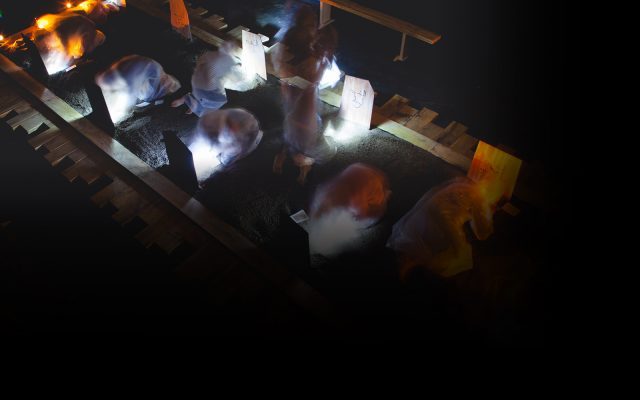
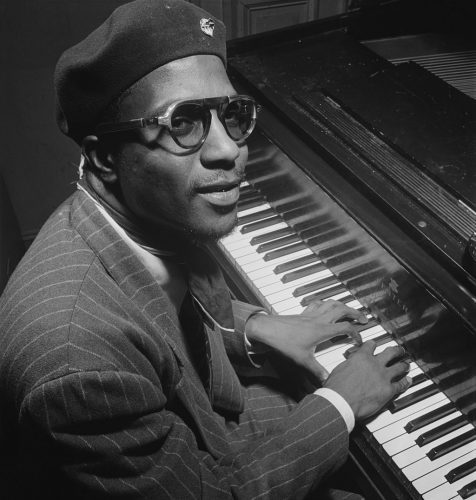
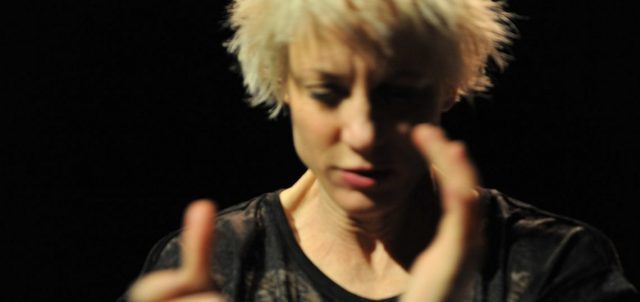

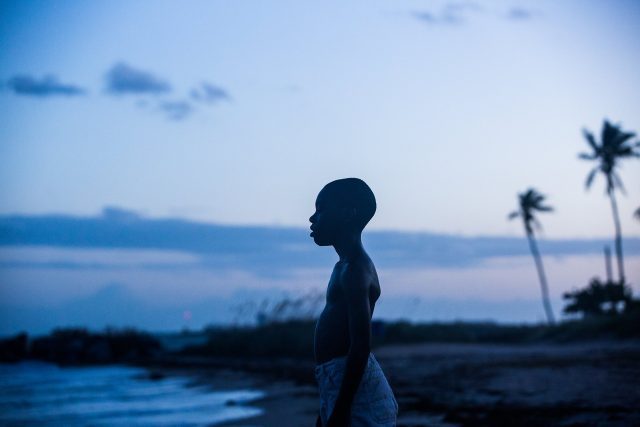
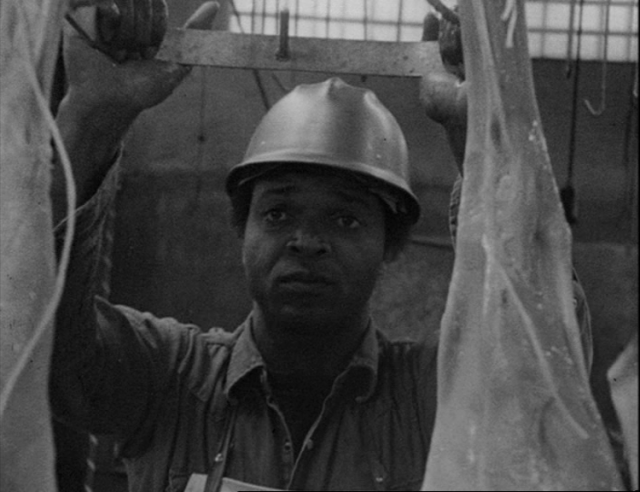
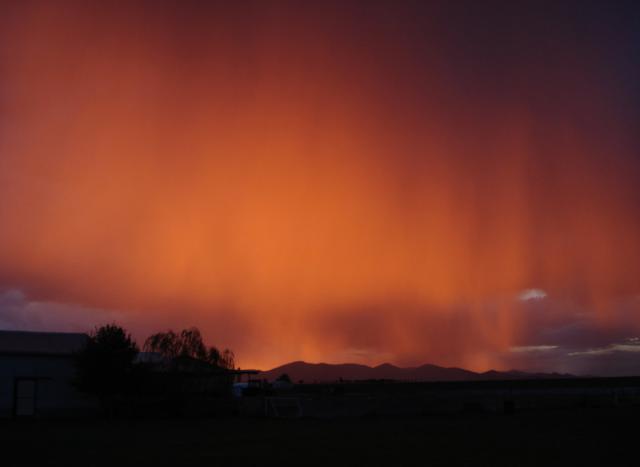
 Carlos Reygadas’s Silent Light is a gentle, deeply felt, gorgeously shot work of intense calm and beauty. The film opens with a stunning sunrise and ends with a glorious sunset; in between is scene after scene of sublime beauty and simplicity, as Reygadas uses natural sound and light, a cast of mostly nonprofessional actors, and no incidental music to tell his story, allowing it to proceed naturally. In a Mennonite farming community in northern Mexico where Plautdietsch is the primary language, Johan (Cornelio Wall Fehr) is torn between his wife, Esther (Miriam Toews), and his lover, Marianne (Maria Pankratz). While he loves Esther, he finds a physical and spiritual bond with Marianne that he does not feel with his wife and their large extended family. Although it pains Johan deeply to betray Esther, he is unable to decide between the two women, even after tragedy strikes. Every single shot of the spare, unusual film, which tied for the Jury Prize at the 2007 Cannes Film Festival (with Vincent Paronnaud and Marjane Satrapi’s Persepolis), is meticulously composed by Reygadas (Japon,
Carlos Reygadas’s Silent Light is a gentle, deeply felt, gorgeously shot work of intense calm and beauty. The film opens with a stunning sunrise and ends with a glorious sunset; in between is scene after scene of sublime beauty and simplicity, as Reygadas uses natural sound and light, a cast of mostly nonprofessional actors, and no incidental music to tell his story, allowing it to proceed naturally. In a Mennonite farming community in northern Mexico where Plautdietsch is the primary language, Johan (Cornelio Wall Fehr) is torn between his wife, Esther (Miriam Toews), and his lover, Marianne (Maria Pankratz). While he loves Esther, he finds a physical and spiritual bond with Marianne that he does not feel with his wife and their large extended family. Although it pains Johan deeply to betray Esther, he is unable to decide between the two women, even after tragedy strikes. Every single shot of the spare, unusual film, which tied for the Jury Prize at the 2007 Cannes Film Festival (with Vincent Paronnaud and Marjane Satrapi’s Persepolis), is meticulously composed by Reygadas (Japon, 
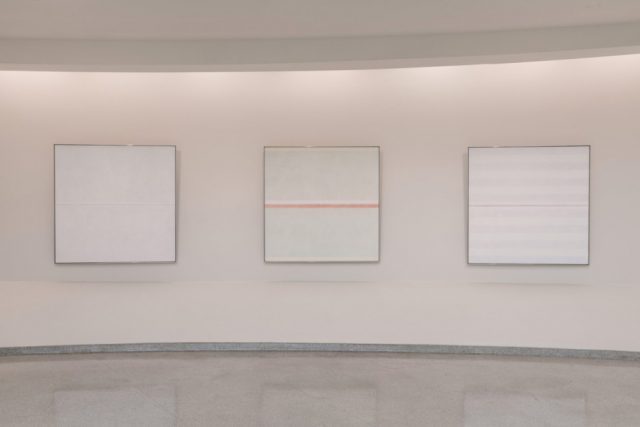
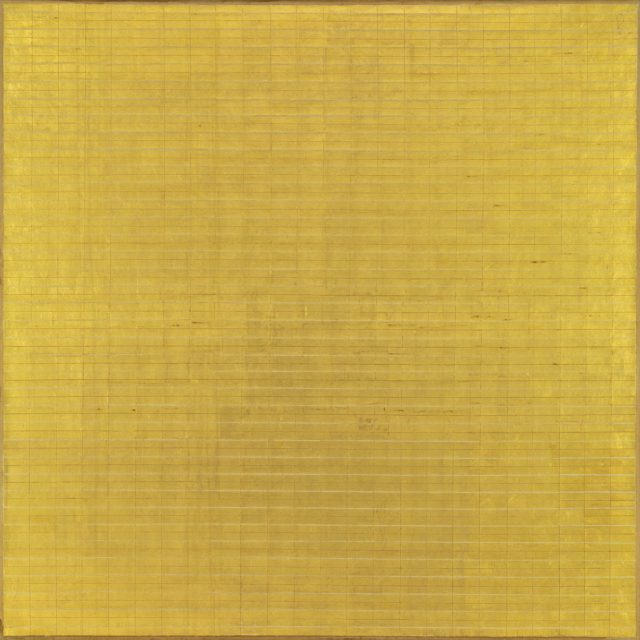

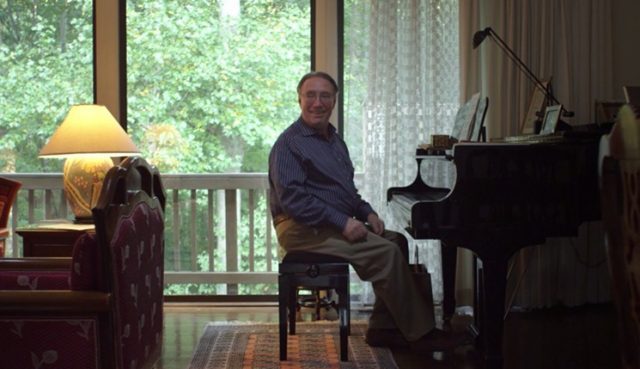
 There’s an odd element that runs through Eve Marson’s documentary Dr. Feelgood: Dealer or Healer? In nearly every new interview with film subject Dr. William Hurwitz, whose treatment of chronic pain included prescribing sometimes tens of thousands of opioids over a twelve-to-eighteen-month period for a single patient, the physician has a sly smile, as if this is all a kind of joke, or that he doesn’t understand what all the fuss is about. “One of the best reasons to go into medical practice is to help people. When somebody comes to you and they feel their life is constrained by pain, the ability to relieve that pain gives enormous satisfaction,” he explains at the beginning of the film. And he is still very satisfied, despite the death of at least two of his patients, time in prison, and the loss of his medical license. The film points out that one in three Americans suffer from chronic pain and that more than 200 million prescriptions for opioid painkillers are written each year. Marson shows viewers several sides of the controversial topic, in interviews with Dr. Hurwitz’s daughter, Gabriela; his ex-wife, Nilse Quercia; his former nurse, Ann Wierbinski; his former receptionist, Georgia Tsourounis; his defense attorney, Lawrence Robbins; patients Molly Shaw, Bret McCarter, and Jane Tanner; pain-treatment expert Dr. Anna Lembke; FBI agent Aaron Weeter; retired Fairfax County police officer Ken Pedigo; New York Times journalist John Tierney; Paul Nye and Michaelina Woodson, who believe Dr. Hurwitz’s treatment killed their spouses; and retired physician Dr. Hal Talley, who points out, “We have never come up with a test that tells you whether somebody is in pain or not.”
There’s an odd element that runs through Eve Marson’s documentary Dr. Feelgood: Dealer or Healer? In nearly every new interview with film subject Dr. William Hurwitz, whose treatment of chronic pain included prescribing sometimes tens of thousands of opioids over a twelve-to-eighteen-month period for a single patient, the physician has a sly smile, as if this is all a kind of joke, or that he doesn’t understand what all the fuss is about. “One of the best reasons to go into medical practice is to help people. When somebody comes to you and they feel their life is constrained by pain, the ability to relieve that pain gives enormous satisfaction,” he explains at the beginning of the film. And he is still very satisfied, despite the death of at least two of his patients, time in prison, and the loss of his medical license. The film points out that one in three Americans suffer from chronic pain and that more than 200 million prescriptions for opioid painkillers are written each year. Marson shows viewers several sides of the controversial topic, in interviews with Dr. Hurwitz’s daughter, Gabriela; his ex-wife, Nilse Quercia; his former nurse, Ann Wierbinski; his former receptionist, Georgia Tsourounis; his defense attorney, Lawrence Robbins; patients Molly Shaw, Bret McCarter, and Jane Tanner; pain-treatment expert Dr. Anna Lembke; FBI agent Aaron Weeter; retired Fairfax County police officer Ken Pedigo; New York Times journalist John Tierney; Paul Nye and Michaelina Woodson, who believe Dr. Hurwitz’s treatment killed their spouses; and retired physician Dr. Hal Talley, who points out, “We have never come up with a test that tells you whether somebody is in pain or not.”